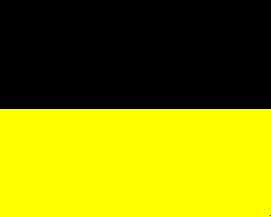Giesl von Gieslingen



Oberleutnant Artur Giesl von Gieslingen was appointed to be chief of staff for the VIII. Corps in January 1896, taking over for Obst Albert von Koller. This lasted until June 1898, when Giesl was replaced by Obst Svetozar Boroevic von Bojna. FML Giesl took command of the VIII. Corps in October 1912, replacing GdI Adalbert Freiherr von Koller. This command he maintained until September 1914, when he was dismissed and FML Viktor von Scheuchenstüel replaced him.
GWS, 2/02
Attention: Visit FEEFHS map room for a Map of Serbia (pre-1912), including Valjevo, the Kolubara river, and Schabatz (Sabac). Be sure to open in a separate window to toggle between this page and FEEFHS.
Immediately following full mobilisation
5. Armee, GdI Liborius Frank
VIII. Korps, GdK Artur Giesl v. Gieslingen
Chief of staff, Obst Ludwig Sündermann
9. inf. div., FML Viktor v. Scheuchenstüel
17. inf. brig., GM Franz Daniel
18. inf. brig., GM Josef Mayrhofer v. Grünbrühel
9. feld art. brig., GM Rudolf Laube
21. Landstürm inf. div., FML Artur Przyborski
41. Landstürm inf. brig., GM Othmar Panesch
42. Landstürm inf. brig., GM Alois Podhajski
21. feld art. brig., Obst Karl Hinke
Giesl's Role in the First Invasion of Serbia, August 1914
Under the command of GdI Liborius Frank in the 5. Army, General Artur von Giesl ordered his VIII. Corps across the upper Drina river above its confluence with the Jadar river on the night of 11 August 1914. To their left, the Cer Ridge rose above the valley, dominating the approach to Valjevo. Giesl was instructed to take the Cer Ridge and thus give the Austrians control of the heights and the advantage.
General Vojvod Stefan Stefanovic of the Serbian 2. Army moved fast to arm the exposed Macva salient, and had the whole Cer ridge lined with Serbian artillery and mountain troops within a few days of the Austrian invasion. Giesl meanwhile had occupied the length of the Jadar river’s right bank, and launched an attack toward the western spur of the ridge to seize the northern slopes. By 18 August, the entire Cer ridge was in Giesl's hands after a ferocious duel with the Serbians, but Kozaningrad on the eastern end was retaken by Stefanovic within a day by a decisive counterstroke on the morning of 19 August, which broke the VIII. Corps.
Giesl was forced to abandon the whole Cer ridge after this action, and in turn Frank ordered GdI Adolf v. Rhemen to clear his XIII. Corps from the south. Otherwise, the 5. Army would lose an entire Corps as the Serbian 2. and 3. Armies swept down the Jadar from either ridge. By August 24, the VIII. Corps was back across the Drina, after suffering heavy losses.
GWS, 12/00 [rev. 9/04]
Giesl's Role in the Second Invasion of Serbia, September 1914
After the Serbian 1. Army under General Bojovic made a bold invasion of Syrmia on 5 September 1914, Giesl was ordered to launch a fresh invasion of the Macva within three days. On 8 September, he ordered his 21. Infantry division under FML Przyborski to seize a bridgehead at Parasnica. This was not a town, but a spit of land on the Serbian side of the serpentine Save river, about 2 miles north of its confluence with the Drina river. Thus, it was a strategic location. General Stefanovic scraped together troops from the locals of the Macva, formed the Parasnica and Ravnje detachments, and backed them up with the skilled soldiers of the Morava Division’s Brigade No. 1, which covered the left flank of the Parasnica. The Serbs blocked any further advance because the terrain was especially swampy within 3 miles of Parasnica, and the locals were fighting with peculiar determination.
Likely, the men of Macva had not recovered from the first invasion of their lands, when the troops of the VIII. Corps set fire to most villages. Przyborski led a full month’s fighting from the Parasnica, backed by the brigade of Oberst Prinz zu Schwarzenburg, but no gains were made. It was amidst this complete lack of success, even to cross more than a few miles into the enemy territory, that Giesl was relieved of his command.
Relieved of Command and Replaced in the Field, but Not Alone
According to a newspaper report out of Venice on 12 October 1914, General Giesl was one of five Corps commanders relieved of their commands simultaneously on 10 October 1914. The reason given was that all of them requested to be relieved on grounds of health, but these commanders' performances on the field of battle were less than striking, and their removal was a matter of expediency. The commanders were listed as being "Generals Baron Giesl von Gieslingen of the VIII. Army Corps, Koloszvary de Koloszvar of the XI. Army Corps, Meixner von Zweienstamm of the VII. Army Corps, and the commanders of the VI. and XVII. Corps," who were Boroevic von Bojna and Graf Huyn.
Boroevic of course was not relieved of his command for reasons of illness, but rather advanced to command the III. Army after General Brudermann was relieved for his failures on the battlefield. The article lists the command successors as being General Arz von Straussenberg for the VI. Corps, Fail-Griessler for the VII. Corps, Ljubicic for the XI. Corps, Kritek for the XVII. Corps, and Scheuchensteuel for the VIII. Corps.
GWS, 10/01 [rev. 9/05]
